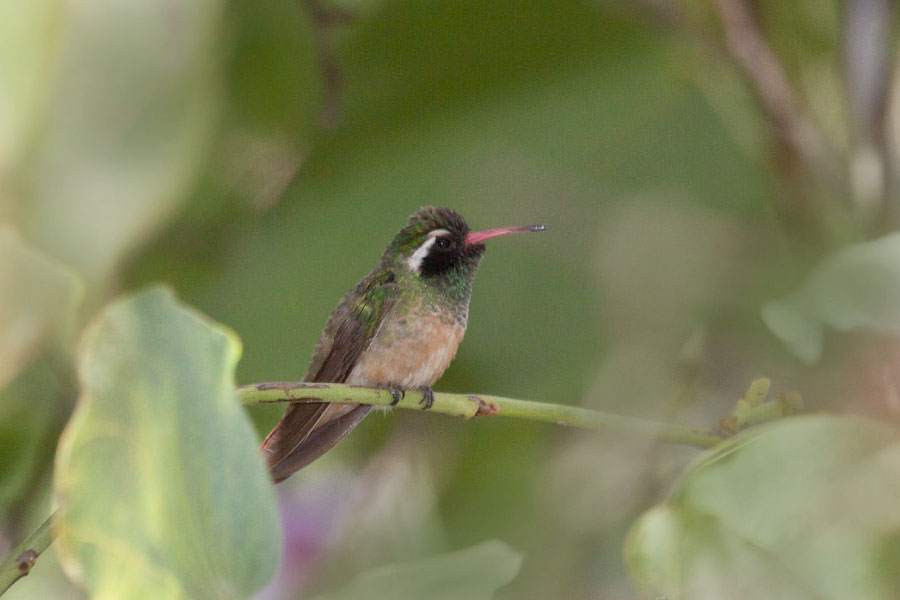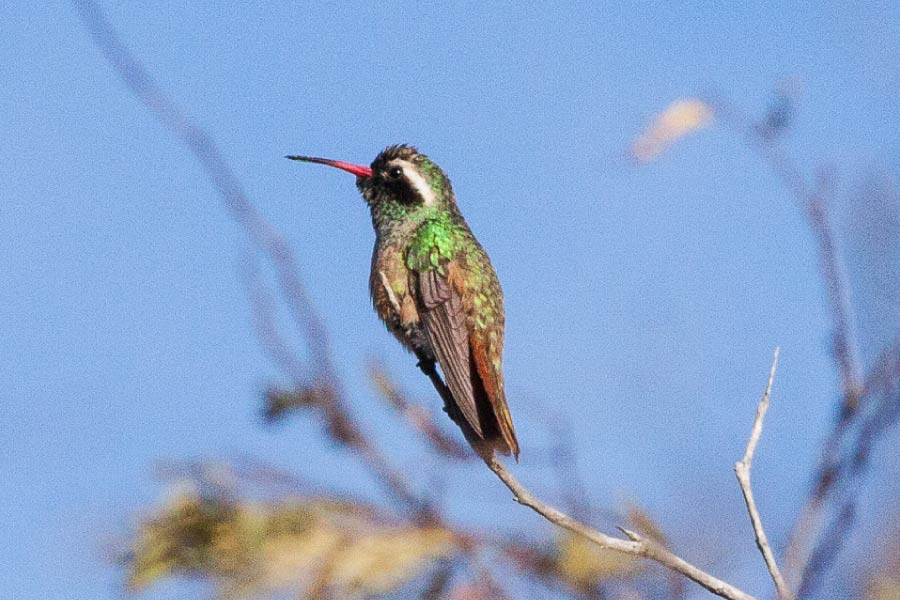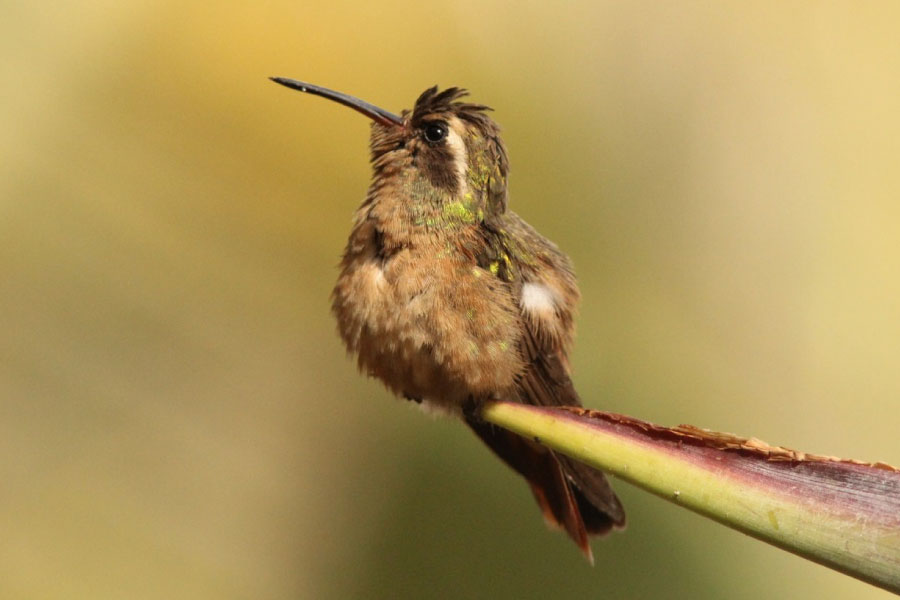Xantus’s hummingbird facts, pictures and information. Read on to find out about this species, which is only found in Baja California, Mexico…
(Main photo: Marlin Harms (cropped / resized by ActiveWild.com) [CC BY 2.0]
Xantus's Hummingbird Facts At A Glance
- Scientific name: Basilinna xantusii
- Type of Animal: Bird
- Animal Family: Trochilidae (the hummingbird family)
- Where Found: Baja California, Mexico (occasionally seen in southern California)
- Length: 8 to 9 cm (3.15 to 3.54 in.)
- Weight: 3 to 4 grams (0.11 to 0.14 oz.)
- Conservation Status: Least Concern
Xantus's hummingbird is named after the Hungarian zoologist John Xantus de Vesey (see Wikipedia). Like all hummingbirds it is a small nectarivore (nectar-eating animal) capable of hovering and flying in all directions, including backwards.
This Mexican species is rarely seen in the United States.
How To Recognize Xantus's Hummingbird
Xantus’s hummingbird is a mid-sized hummingbird. Its back is predominantly emerald green, its undersides buff and its tail rufous.
The face is dark and has a white stripe running over the top of the eye to the back of the head. The forehead of the male is darker than that of the female. The bill is red with a black tip.
Similar Species
Xantus's hummingbird is similar in appearance to the closely-related white-eared hummingbird. The white-eared hummingbird is a resident of Mexico and Central America. It is occasionally seen in the southern United States during the summer.
The buff underparts, rufous tail and slightly curved bill of the Xantus's hummingbird can be used to tell the species apart.
Where Is Xantus's Hummingbird Found?
Very occasionally Xantus's hummingbird is seen in the United States, with sightings being reported around once every two years, usually in California.
Xantus's Hummingbird Habitat
Xantus's hummingbird lives in a variety of habitats, including mountain forests, forest clearings, and woodlands. The species is also seen in gardens and will come to feeders.
The species is little-studied and as a result not much is known about its life-cycle and behavior.
Hummingbirds & Related Species
The hummingbird family has two subfamilies: Phaethornithinae, the ‘hermit hummingbirds’, and Trochilinae, the ‘typical hummingbirds’. Xantus's hummingbird belongs to the
Hummingbirds are only found in the Americas. They are nectarivores (nectar-eating animals) who co-evolved with flowers.
The relationship between hummingbirds and flowers is beneficial for both parties. Hummingbirds help flowers to reproduce by spreading their pollen. In return, flowers provide hummingbirds with nectar, a sugar-rich liquid.
Hummingbirds get their name from the humming sound produced by their wings as they fly. Hummingbirds have a unique anatomy and flying style. Their wings make a figure of eight movement, and beat remarkably quickly (usually between 10 to 80 beats per second, with some species having been recorded at 200 beats per second).
The hummingbirds’ unique flying style means that as well as being able to fly forwards, they can also hover and fly backwards and sideways.
Discover More Amazing Animals with Active Wild
- You can see more animals that start with X here: Animals That Start With X
- Interested in birds? Check out this page: Birds: The Ultimate Guide
- See amazing animals from all around the world here: A to Z animals
- Become an animal expert by visiting this page: Animals: The Ultimate Guide to the Animal Kingdom





This says nothing about the way it flys or adaptions ):